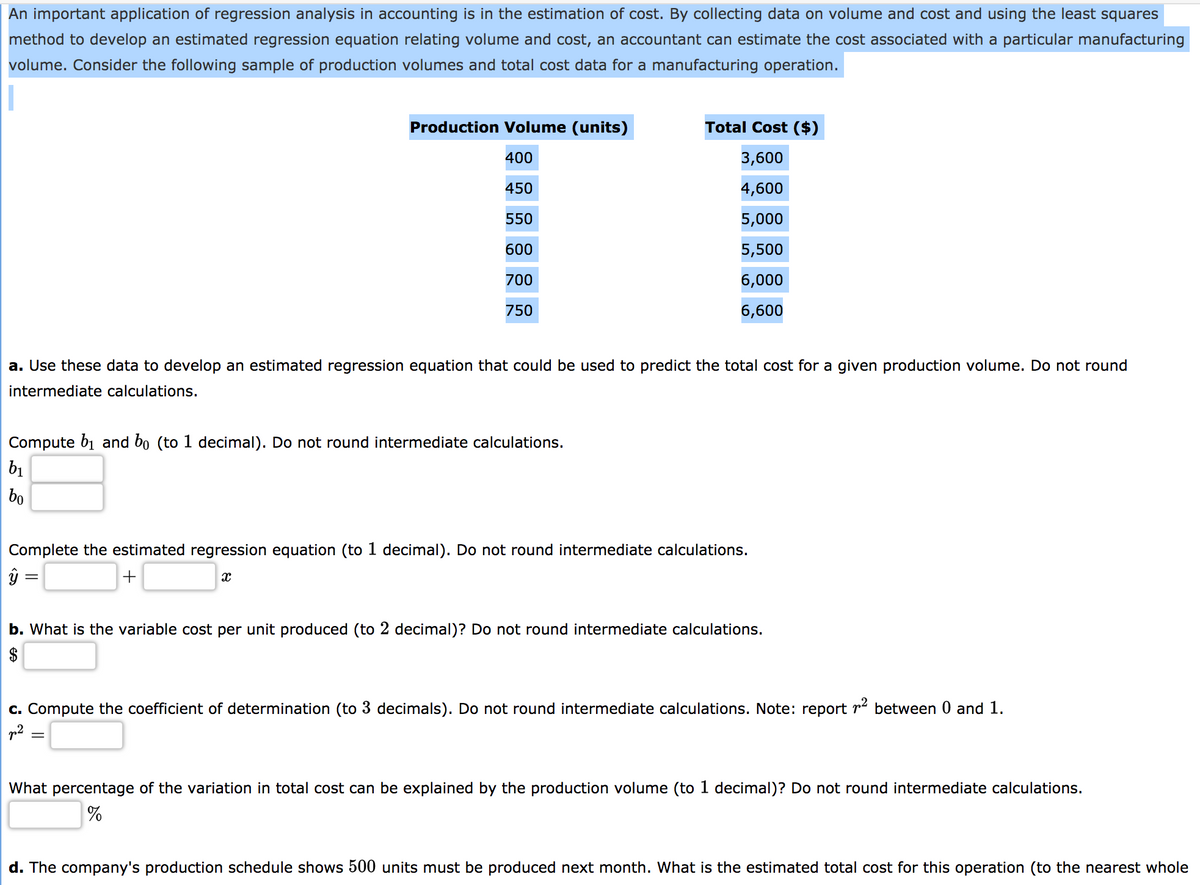An important application of regression analysis in accounting is in the estimation of cost. By collecting data on volume and cost and using the least squares method to develop an estimated regression equation relating volume and cost, an accountant can estimate the cost associated with a particular manufacturing volume. Consider the following sample of production volumes and total cost data for a manufacturing operation. TI Production Volume (units) Total Cost ($) 400 3,600 450 4,600 550 5,000 600 5,500 700 6,000 750 6,600 a. Use these data to develop an estimated regression equation that could be used to predict the total cost for a given production volume. Do not round intermediate calculations. Compute bị and bo (to 1 decimal). Do not round intermediate calculations. bị bo Complete the estimated regression equation (to 1 decimal). Do not round intermediate calculations. b. What is the variable cost per unit produced (to 2 decimal)? Do not round intermediate calculations. $ c. Compute the coefficient of determination (to 3 decimals). Do not round intermediate calculations. Note: report r² between 0 and 1. p2 = What percentage of the variation in total cost can be explained by the production volume (to 1 decimal)? Do not round intermediate calculations. d. The company's production schedule shows 500 units must be produced next month. What is the estimated total cost for this operation (to the nearest whole
Correlation
Correlation defines a relationship between two independent variables. It tells the degree to which variables move in relation to each other. When two sets of data are related to each other, there is a correlation between them.
Linear Correlation
A correlation is used to determine the relationships between numerical and categorical variables. In other words, it is an indicator of how things are connected to one another. The correlation analysis is the study of how variables are related.
Regression Analysis
Regression analysis is a statistical method in which it estimates the relationship between a dependent variable and one or more independent variable. In simple terms dependent variable is called as outcome variable and independent variable is called as predictors. Regression analysis is one of the methods to find the trends in data. The independent variable used in Regression analysis is named Predictor variable. It offers data of an associated dependent variable regarding a particular outcome.

Trending now
This is a popular solution!
Learn your way
Includes step-by-step video
Step by step
Solved in 7 steps








